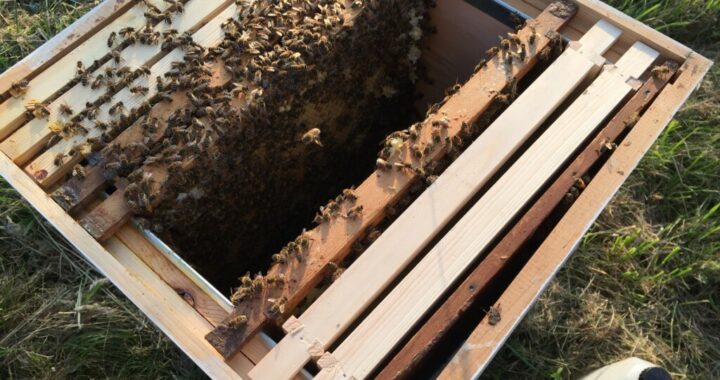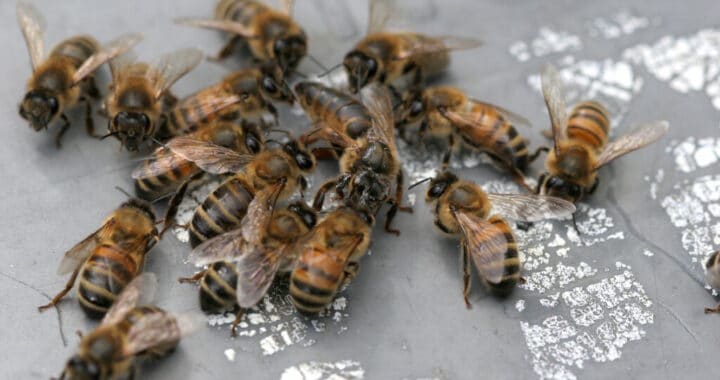A very quick inspection the other evening, showed that the swarm collected a month ago has a queen that appears to be laying well.
Since the swarm was collected, they have been creating comb to store honey and pollen in as well as provide the queen a place to lay eggs for the next generation of bees.
I have been regularly checking the new colony to ensure that they are healthy and have no visible signs of disease. There is always the chance, when collecting a swarm of bees, that they bring back a disease to the quarantine apiary such as EFB (European Foul Brood) or AFB (American Foul Brood), both of which are contagious, and notifiable to DEFRA.
The new colony is looking very healthy and the queen seems to be laying healthily producing eggs and brood (bee larvae)





